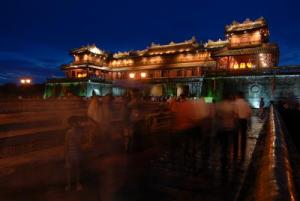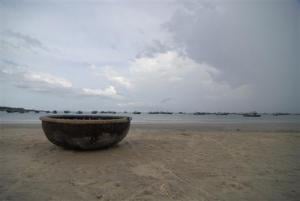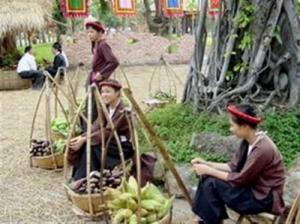Perfume Pagoda: One-of-a-Kind Sacredness
Huong Pagoda, or more commonly known as the Perfume Pagoda, is the most popular pilgrimage site for Buddhists in Vietnam.
Aside from its beautiful location on Huong Mountain on a serene environment of limestone hills and tropical forests, perhaps one of the main reasons why Perfume Pagoda is famous is its unique site which is inside a cave, Huong Tich Cave. Spectacular stalactites fill the cave. Discovered 2,000 years ago, a message written inside by Lord Trinh Sam (who reigned North Vietnam from 1767-1782) in 1770 describes the cave as “the most beautiful cavern in the country.” Perfume Pagoda was built in the late 17th century and is situated in My Duc District, 70 kilometers west of Ha Noi. It is at the center of a Buddhist shrine complex.
Over one million visitors come to Perfume Pagoda each year, either as pilgrims to pray for a “happy and prosperous year,” or as tourists to simply gaze at the beauty and serenity of the place. But during the Pagoda Festival, a three-month celebration which starts on the sixth day of the first lunar month, even more visitors arrive at the place. As of date, about 200,000 visitors, both local and foreign, have already come to the shrine. Nguyen Van Hau, deputy chairman of the People's Committee of My Duc District and head of the festival organizing group, confirmed this statistic. He further stated that more than 50,000 pilgrims and tourists have arrived at the pagoda on the first day of the festival alone, and despite the bad weather. His office expects around 1.5 million visitors at the Perfume Pagoda during the festival.
The Pagoda Festival this year is expected to be the biggest celebration yet, with tourists treated to more and better activities like a photo exhibition of ancient pagodas; boat music and art performances on the Yen Stream; releasing of birds at the Thien Tru wharf; poetry night; and flower garlands and colored lanterns parade by the river. 5,000 boats have already been prepared for this year's event because of the growing number of visitors. Especially this year, the Pagoda Festival can get very crowded. Traffic jam is expected. For those who do not want such hustle and bustle and rather prefer the peacefulness of the shrine for which the site is famous for in the first place, one can go before or after the festivities.
Huong Pagoda can be reached in several ways, depending on the choice of adventure and/ or comfor of the traveller. From Ha Noi, one can take either the bus or coach. To get to Ben Duc pier, tourists can either take a three-hour drive from Luong Yen or a shorter two hour-drive from Giap Bat. From there, visitors can then either take a road trip to the pagoda, or a 45-minute boat ride which is most preferrred by tourists because of the breathtaking view along the way. The pagoda itself can be reached either through hiking or cable car. If you prefer the former, it is a 1,000-step climb to the top so be sure to wear reliable and comfortable shoes. The long climb is well-rewarded though with a spectacular sight and shops along the way where you can rent mats if you need to take a rest. For the latter, the ride costs VND80,000 (US$4) upon going up and VND60,000 going down.
According to legends, Bodhisatva (Quan Am in Vietnamese) stayed at Huong Tich cave to help save human souls. That makes the cave a sacred place. But whether the legends are true or not, one can be assured leaving Huong Tich Cave and Perfume Pagoda itself feeling a little more serene than usual, with lasting memories to hold for a long time.









